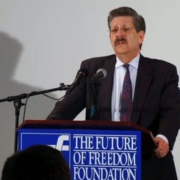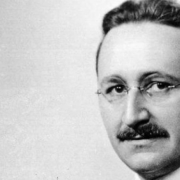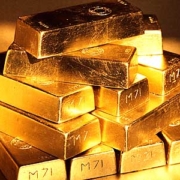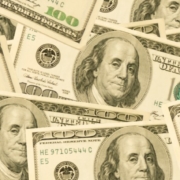The Demise Of Central Planning
As a young man, Prof Ebeling witnessed first hand the demise of the Soviet system. The article below is a truly remarkable eye witness account of the 72 hours that changed the world. Pause on that: just 72 hours to move from seemingly unassailable Communist Party rule to the new beginnings of the Russian nation we have today. As we know, Mises had shown in the early ’20s how it was impossible for a pure socialist system to centrally plan; in the absence of a price system, they could not properly allocate scare resources. In the late ’30s, Hayek showed us how it was impossible that any one group of planners match the interpersonal transactions of hundreds of millions of people, each with their own particular subjective values on each of the specific things they were doing. It took 70 years for the total collapse of the Soviet system. Then 72 hours changed the world. We see that Soviet-style planing of money still lingers on in the world today. We are not accustomed to thinking that the Bank of England, the Federal Reserve and the European Central Bank are money planning bureaus, but that is what they do: try to plan our money supply . We have 9 wise men in the MPC who do this. In our case, they do this by inflation targeting via interest rate adjustments and their own bond purchases. The money supply needs no more planning than the price of apples does, yet we still cling to this notion. To all policy makers, those 72 hours Ebeling writes about are a stark reminder that when confidence blows in something, and people lose faith in the status quo, things can change very quickly indeed! The credit-induced boom of the central banks, with their private sector mints, the private banks, lending recklessly during the noughties, led to catastrophe by 2007/08. The policy response of our dear leader Gordon Brown involved the socialisation of banking losses. Having assumed the liabilities of the banks, national governments across the Western world are now crisis. Like the cartoon character who runs off the edge of the cliff with his legs still spinning, suspended in mid air, it may be the sudden awareness of an untenable position that brings the paper money system crashing back down to earth. Are we due for our own 72 hours of reckoning?
When Soviet Power Crumbled: The Failed Hard-Line Coup Attempt of August 1991 by Richard M. Ebeling
Twenty years ago, on August 22, 1991, I stood amid a vast cheering crowd of tens of thousands of people outside the Russian parliament building in Moscow, the capital of the Soviet Union. They were celebrating the failure by diehard Soviet leaders to undertake a political and military coup d’état meant to maintain dictatorial communist rule in the Union of Soviet Socialist Republics. Four days earlier, on August 19th, a band of hard-line Soviet political and military leaders had initiated the coup attempt against the leadership of Mikhail Gorbachev, the General Secretary of the Communist Party of the U.S.S.R, and Boris Yeltsin, president of the Russian Soviet Federated Socialist Republic, the largest of the constituent republics of the Soviet Union. Fearful that the political and economic reforms that had been introduced by Gorbachev shortly after his ascendency to the top leadership position in the Soviet Communist Party in 1986 were now threatening to bring about the disintegration of the Soviet Union, the hard-line conspirators were determined to preserve intact what remained of Soviet power in their own country.
Gorbachev’s Attempt to Save Socialism
Gorbachev believed that the Soviet Union had taken several serious wrong turns in the past. But he was not an opponent of socialism or its Marxist-Leninist foundations. He wanted a new “socialism-with-a-human-face.” His goal was a “kinder and gentler” communist ideology, so to speak. He truly believed that the Soviet Union could be saved, and with it a more humane collectivist alternative to Western capitalism. To achieve this end, Gorbachev had introduced to two reform agendas: First, perestroika, a series of economic changes meant to admit the mistakes of heavy handed central planning. State enterprise managers were to be more accountable, small private businesses would be permitted and fostered, and Soviet companies would be allowed to form joint ventures with selected Western corporations. Flexibility and adaptability would create a new and better socialist economy. Second, glasnost, political “openness” under which the follies of the past would be admitted and the formerly “blank pages” of Soviet history – especially about the “crimes of Stalin” – would be filled in. Greater historical and political honesty, it was said, would revive the moribund Soviet ideology and renew the Soviet people’s enthusiastic support for the redesigned bright socialist future. The more hard-line and “conservative” members of the Soviet leadership considered all such reforms as opening a Pandora’s Box of uncontrollable forces that would undermine the Soviet system. They had already seen this happen in the outer ring of the Soviet Empire in Eastern Europe.
The Beginning of the End in Eastern Europe
In 1989 Gorbachev had stood by as the Berlin Wall, the symbol of Soviet imperial power in the heart of Europe, had come tumbling down, and the Soviet “captive nations” of Eastern Europe – East Germany, Poland, Czechoslovakia, Hungary, Romania and Bulgaria – that Stalin had claimed as conquered booty at the end of the Second World War, began to free themselves from communist control and Soviet domination. The Soviet hard-liners were now convinced that a new political treaty that Gorbachev was planning to sign with Russian president Yeltsin and Nursultan Nazarbayev, president of the Soviet republic of Kazakhstan, would mean the end of the Soviet Union, itself. Already, the small Baltic republics of Estonia, Latvia, and Lithuania were reasserting the national independence they had lost in 1939-1940, as a result of Stalin and Hitler’s division of Eastern Europe. Violent and murderous Soviet military crackdowns in Lithuania and in Latvia in January 1991 had failed to crush the budding democratic movements in those countries. Military methods had also been employed, to no avail, to keep in line the Soviet republics of Georgia and Azerbaijan.
Communist Conspirators for Soviet Power
On August 18th, the hard-line conspirators tried to persuade Gorbachev to reverse his planned political arrangements with the Russian Federation and Soviet Kazakhstan. When he refused he was held by force in a summer home he was vacationing at in the Crimea on the Black Sea. Early on the morning of August 19th, the conspirators issued a declaration announcing their takeover of the Soviet government. A plan to capture and possibly kill Boris Yeltsin failed. Yeltsin eluded the kidnappers and made his way to the Russian parliament building from his home outside Moscow. Military units loyal to the conspirators ringed the city with tanks on every bridge leading into the city and along every main thoroughfare in the center of Moscow. Tank units had surrounded the Russian parliament, as well. But Yeltsin soon was rallying the people of Moscow and the Russian population in general to defend Russia’s own emerging democracy. People all around the world saw Yeltsin stand atop an army tank outside the parliament building asking Muscovites to resist this attempt to return to the dark days of communist rule. The Western media made much at the time of the apparent poor planning during the seventy-two hour coup attempt during August 19th to the 21st. The world press focused on and mocked the nervousness and confusion shown by some of the coup leaders during a press conference. The conspirators were ridiculed for their Keystone cop-like behavior in missing their chance to kidnap Yeltsin or delaying their seizure of the Russian parliament building; or leaving international telephone lines open and not even jamming foreign news broadcasts that were reporting the events as they happened to the entire Soviet Union.
The Dangers If the Hard-liners had Won
Regardless of the poor planning on the part of the coup leaders, however, the fact remains that if they had succeeded the consequences might have been catastrophic. I have a photocopy of the arrest warrant form that had been prepared for the Moscow region and signed by the Moscow military commander, Marshal Kalinin. It gave the military and the KGB, the Soviet secret police, the authority to arrest anyone. It had a “fill-in-the-blank,” where the victim’s name would be written in. Almost 500,000 of these arrest warrant forms had been prepared. In other words, upwards of a half-million people might have been imprisoned in Moscow, alone. The day before the coup began, the KGB had received a consignment of 250,000 pairs of handcuffs. And the Russian press later reported that some of the prison camps in Siberia had been clandestinely reopened. If the coup had succeeded, possibly as many as three to four million people in the Soviet Union would have been sent to the GULAG, the notorious Soviet labor camp system. Another document published in the Russian press after the coup failed had the instructions for the military authorities in various regions around the country. They were to begin tighter surveillance of the people in the areas under their jurisdiction. They were to keep watch on the words and actions of everyone. Foreigners were to be even more carefully followed and watched. And their reports to the coup leaders in Moscow were to be filed every four hours. Indeed, when the coup was in progress, the KGB began to close down commercial joint ventures with Western companies in Moscow, accusing them of being “nests of spies,” and arrested some of the Russian participants in these enterprises.
Fear Underneath the Surrealism of Calm
During the coup attempt Moscow had a surrealistic quality. On the streets around the city it seemed as if nothing were happening – except for the clusters of Soviet tank units strategically positioned at central intersections and at the bridges crossing the Moscow River. Taxi cabs patrolled the avenues looking for passengers; the population seemed to go about its business walking to and from work, or waiting in long lines for the meager supplies of everyday essentials at the government retail stores; and motorists were as usual also lined up at the government owned gasoline stations. Even with the clearly marked foreign license plates on my rented car, I was never stopped as I drove around the center of Moscow. The only signs that these were extraordinary days were the grimmer than usual looks on the faces of many; and that in the food stores many people would silently huddle around radios after completing their purchases. However, the appearance of near normality could not hide the fact that the future of the country was hanging in the balance.
Russians Run the Risk for Freedom
During the three days of that fateful week, Russians of various walks of life had to ask themselves what price they put on freedom. And thousands concluded that risking their lives to prevent a return to communist despotism was price they were willing to pay. Those thousands appeared at the Russian parliament in response to Boris Yeltsin’s appeal to the people. They built makeshift barricades, and prepared to offer themselves as unarmed human shields against Soviet tanks and troops, if they had attacked. My future wife, Anna, and I were among those friends of freedom who stood vigil during most of those three days facing the barrels of Soviet tanks. Among those thousands, three groups were most noticeable in having chosen to fight for freedom: First, young people in their teens and twenties who had been living in a freer environment during the previous six years since Gorbachev had come to power, and who did not want to live under the terror and tyranny their parents had known in the past. Second, new Russian businessmen, who realized that without a free political order their emerging economic liberties would be crushed. And, third, veterans of the Soviet war in Afghanistan, who had been conscripted into the service of Soviet imperialism and were now determined to prevent its return. The bankruptcy of the Soviet system was demonstrated not only by the courage of those thousands defending the Russian parliament, but also by the unwillingness of the Soviet military to obey the orders of the coup leaders. It is true that only a handful of military units actually went over immediately to Yeltsin’s side in Moscow. But hundreds of Russian babushkas – grandmothers – went up to the young soldiers and officers manning the Soviet tanks, and asked them, “Are you going to shoot their mother, your father, your grandmother? We are your own people.” The final act of the coup came when these military units refused to obey orders and seize the Russian parliament building, at the possible cost of hundreds or thousands of lives.
Freedom! Freedom! Freedom!
On that clear, warm Thursday of August 22th, that huge mass of humanity that had assembled in a large plaza behind the Russian parliament stood and listened as Boris Yeltsin told them that that area would now be known as the Square of Russian Freedom. The multitude replied in unison:Svaboda! Svaboda! Svaboda! – “Freedom! Freedom, Freedom!” A huge flag of pre-communist Russia, with its colors of white, blue and red, draped the entire length of the parliament building. The crowd looked up and watched as the Soviet red flag, with its yellow hammer and sickle in the upper left corner, was lowered from the flagpole atop the parliament, and the Russian colors were raised for the first time in its place. And again the people chanted: “Freedom! Freedom! Freedom!” Not too far away from the parliament building in Moscow, that same day, a large crowd had formed at Lubyanka Square at the headquarters of the KGB. With the help of a crane, these Muscovites pulled down a large statue of Felix Dzerzhinsky, the founder of the Soviet secret police that stood near the entrance to the KGB building. In a small park across from the KGB headquarters, in a corner of which rests a small monument to the victims of the Soviet prison and labor camps, an anti-communist rally was held. A young man in an old Czarist Russian military uniform burned a Soviet flag, while the crowd cheered him on. The seventy-five-year nightmare of communist tyranny and terror was coming to an end. The people of Russia were hoping for freedom, and they were basking in the imagined joy of it.
Freedom’s Hope and Post-Communist Reality
The demise of the Communist Party and the Soviet system was one of the momentous events in modern history. That it came about with a relatively small amount of bloodshed during those seventy-two hours of the hard-line coup attempt was nothing short of miraculous – only a handful of people lost their lives. The last twenty years have not turned out how many of the friends of freedom in Russia had hoped. Indeed, post-communist Russia saw a contradictory, poorly organized, and corrupted privatization of Soviet industry, plus a high and damaging inflation in 1992-1994; a severe financial crisis in 1998; a return to authoritarian political rule following Vladimir Putin’s rise to power in 1999; two bloody and destructive wars in the attempted breakaway region of Chechnya; wide spread and pervasive corruption at all levels of government; state controlled and manipulated markets, investment, and commerce; assassinations and imprisonments of political opponents of the regime; and significant nostalgia among too many in the country for “great power” status and the “firm hand” of the infamous Stalinist era. Nonetheless, for those of us who were fortunate enough to be in Moscow in August 1991, it remains in our minds as an unforgettable historical moment when the first and longest-lived of the 20th century’s totalitarian states was brought to the doorstep of its end. Dr. Richard M. Ebeling is Professor of Economics at Northwood University. This article was first published at the NU blog, In Defense of Capitalism & Human Progress on the 18th of August

